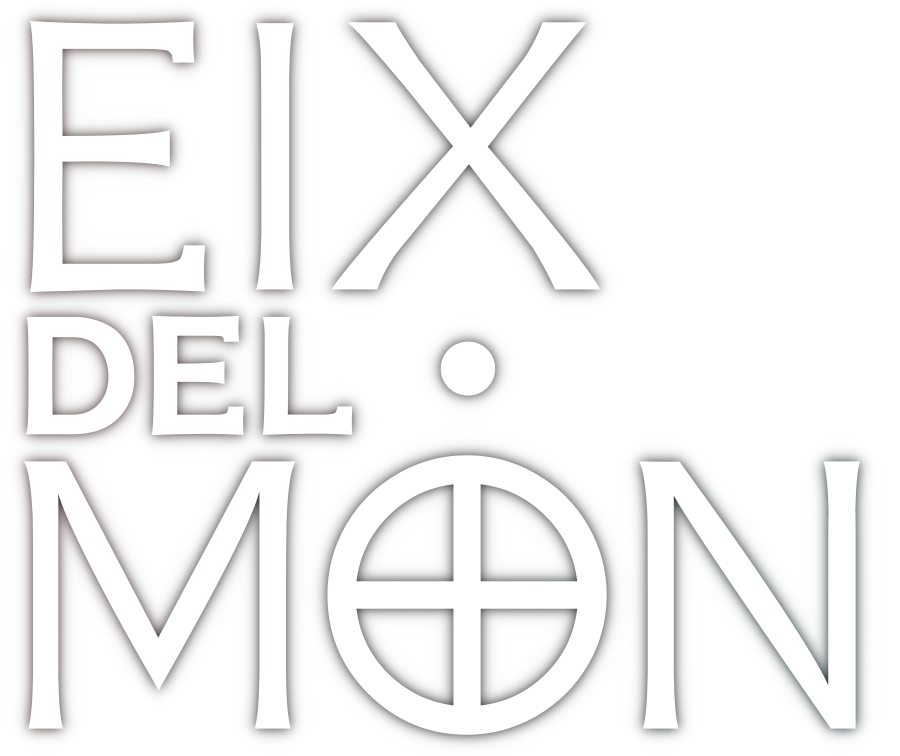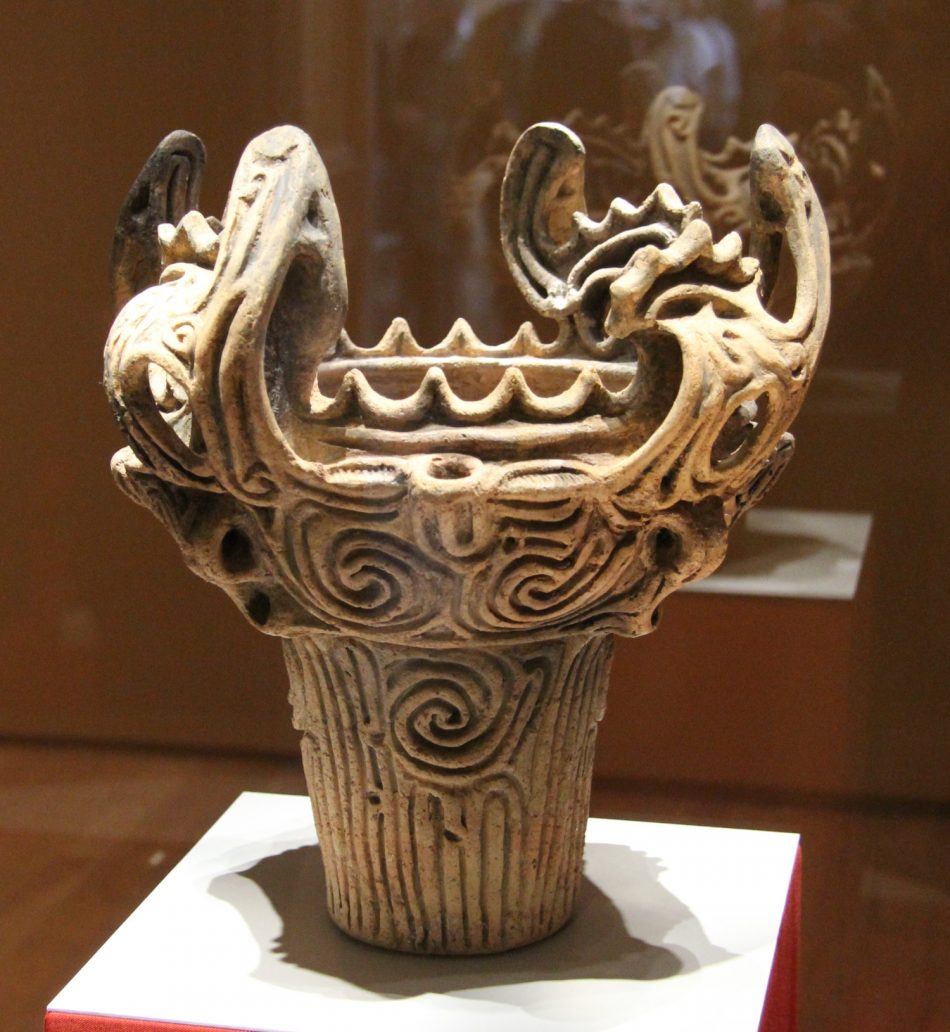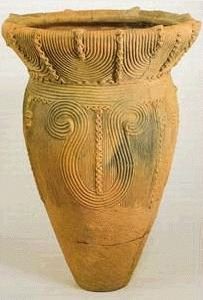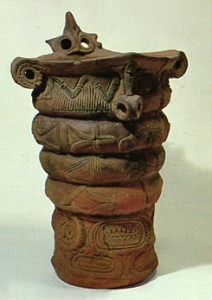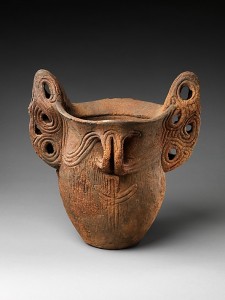Earthenware flame pot. Japan, Jōmon period, c. 3000 BC. Nagaoka Municipal Science Museum, Niigata Prefecture, Japan. Photo: torwen at the British Museum.
This pot was exhibited by the end of 2012 at the Bristish Museum. The press release stated:
Two spectacular Japanese prehistoric pots dating from the Middle Jōmon period (3500-2500 BCE) will shortly go on display as part of the Asahi Shimbun Displays in Room 3. The rare loans from the Nagaoka Municipal Science Museum consist of a ‘flame’ and ‘crown’ pot which will be exhibited alongside the British Museum’s own example of a Jōmon pot which featured in the series A History of the World in 100 Objects.
Both the flame pot and the crown pot, excavated from the Iwanohara site, Nagaoka city, are distinctly and beautifully decorated. Jōmon potters did not use a wheel but constructed the vessels by hand, coiling the clay and then paddling it to firm up the shape. The term Jōmon (縄文) literally means ‘cord marked’ and is used to refer to Japan’s oldest known culture – the Jōmon people. This period is one of the oldest dated pottery traditions in the world, with pottery not being used in the Middle East or North Africa until several thousand years later. The flame pot in this display is around 5000 years old, the same period as Stonehenge, and takes its name from the elaborate flame-like protrusions around the rim. The rims and mouths of these pots held special importance for the Jōmon, as they would have been the focal point for the family gathered around the hearth. The crown pot appears rigid in comparison to the fluid form of the flame pot. These contrasting styles seem to be important in Jōmon culture and can be seen in the arrangement of buildings and burials.
More Jōmon jars:
